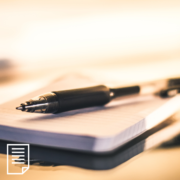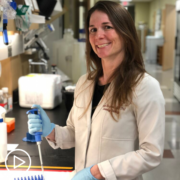Choosing an AML Treatment Path: What Should You Consider?
Choosing an AML Treatment Path: What Should You Consider? from Patient Empowerment Network on Vimeo.
What should be considered when choosing an acute myeloid leukemia (AML) treatment path? Dr. Pinkal Desai explains the factors that are considered to determine the best treatment for an individual patient.
Dr. Pinkal Desai is Assistant Professor of Medicine at Weill Cornell Medical College and a hematologist specializing in acute myeloid leukemia (AML) at Weill Cornell Medicine. Learn more about Dr. Desai, here.
See More From The Pro-Active AML Patient Toolki
Related Resources:

|

|

AML Treatment Decisions: What’s Right for You Resource Guide |
Transcript:
Dr. Desai:
Now, in terms of how we decide treatment, so, there is the leukemia aspect of it, of the biologic indicators of leukemia, and there’s obviously the patient. Because everybody is different. There are patients who are coming in at various ages, like you said. Age is a very important thing to look at, because if you’re younger, the patient’s younger, then they’re usually eligible for what we call intensive chemotherapy. And if the patient is older, they may not be able to handle intensive chemotherapy, and in which case, the induction treatment or the first treatment, we call induction treatment, is basically the treatment we give to get you into remission.
So, the induction treatment decision is based largely from a patient aspect on age.
Whether to go with intensive induction chemotherapy, or with lower intensive chemotherapy, depending on the person’s age.
Now, age is… There is a loose definition of what is considered older age, but we generally say over 75, patients cannot handle intensive chemotherapy. Under 75, under 70 for sure, they’re eligible for intensive chemotherapy, but it’s a biological continuum. So, there are patients who are much healthier, even at older ages, and much older at younger ages. So, we take into consideration not just the age, but also what else do they suffer from? Do they have other comorbidities? Is the heart okay? Do they have kidney damage? Do they have lung damage from previous comorbid illness? And that all goes into figuring out what kind of treatments can they handle.
And that’s the patient aspect of it. Then there’s the biologic aspect of the leukemia itself. Leukemia, the chromosome type. There are leukemias that respond extremely well to intensive chemotherapy. So, you’d figure that kind of treatment for it. Within the molecular subclassification, as we said, there are mutations in certain genes, like FLT3 and IDH. There are targeted treatments towards that, so we look at all of these genes to figure out what is the best mix of chemotherapy, targeted therapy, lower intensity therapy, to look at and combine so that we can have the best chance of being in remission, and to continue to be in remission.










